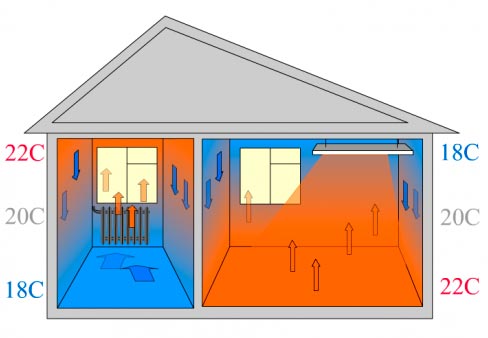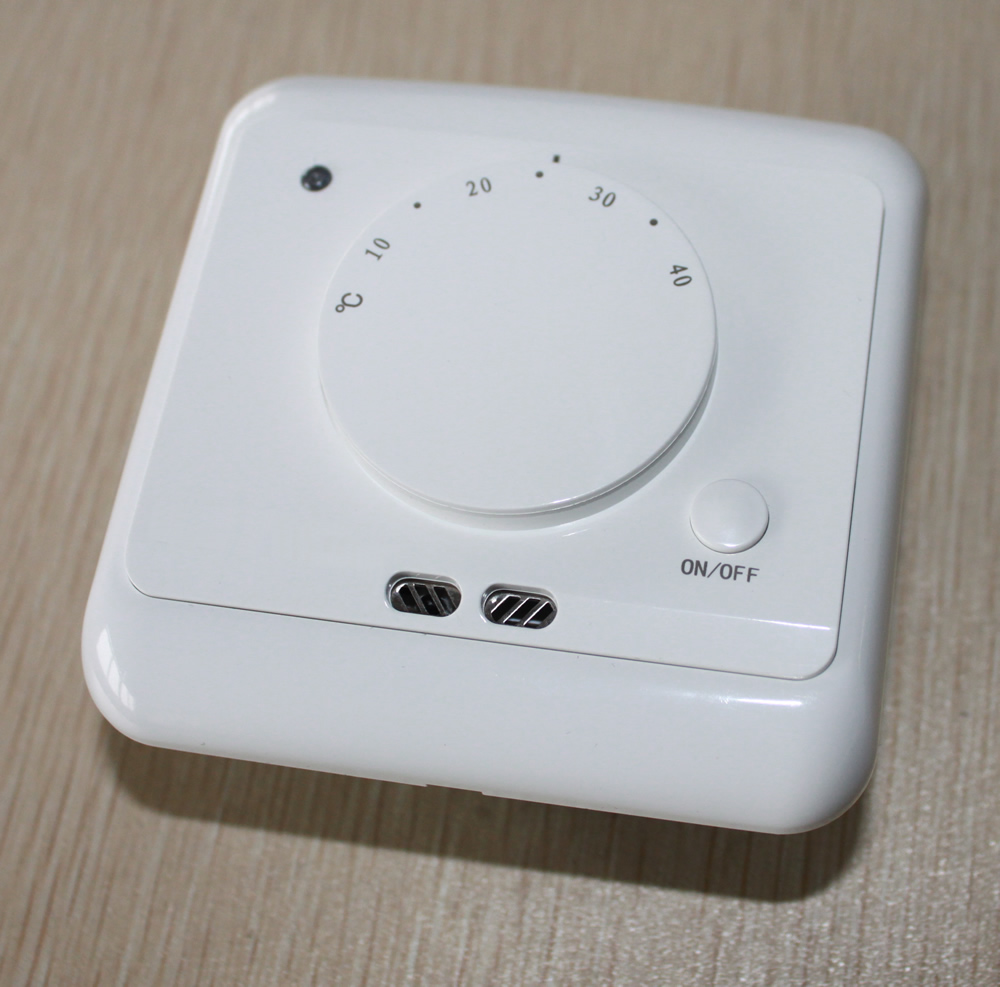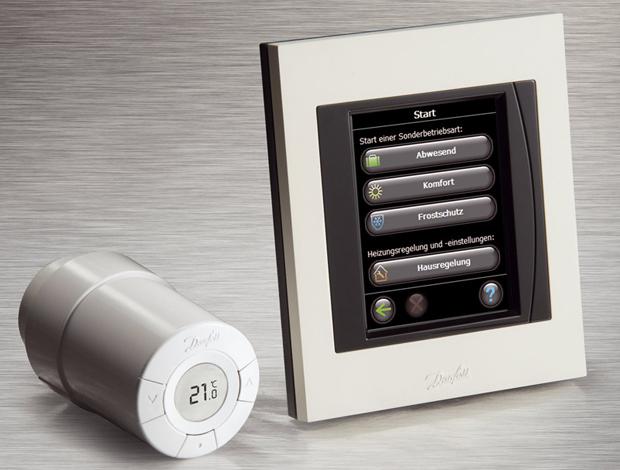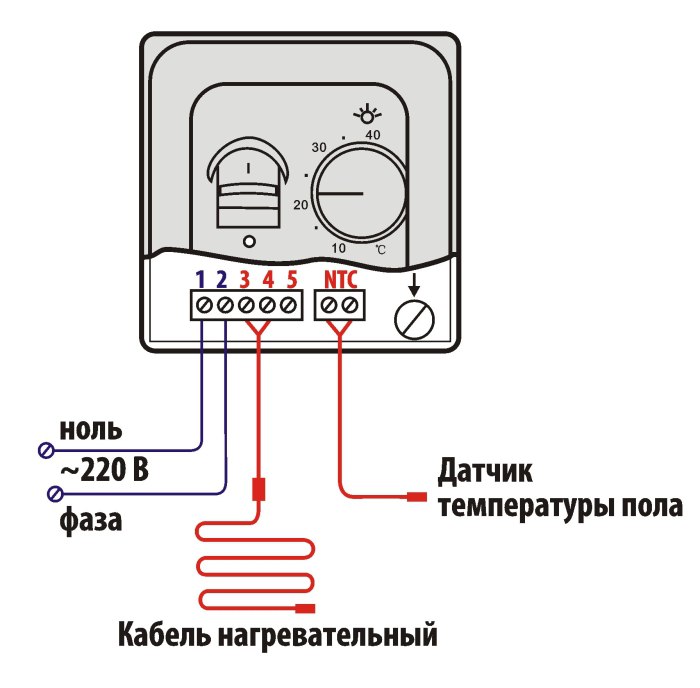What if the heater does not have a thermostat?
- To create cozy warmth, you need to turn on and off such a device - this is inconvenient;
- You cannot warm up the room in advance, for example, in cold weather before returning from work;
- A heater left unattended may cause a fire;
- It is impossible, when leaving for the weekend, to leave the heater on so that it does not work at full strength, but only warms the indoor flowers a little;
- The temperature in the room will sometimes be excessive, and the bills for the light are considerable.
The conclusion is obvious: a thermostat for an infrared heater is a useful attribute!
Let's find out how it works, how it connects and how much it costs.
Infrared heaters are winning the love of consumers. If we compare them with oil radiators, then the "home sun" heats faster, it can be placed under the ceiling and certain types of radiation are even considered therapeutic!

In addition, as you know, infrared rays heat objects, and not the air.
This means that having successfully positioned the device, you can go to a warm bed in the evening.
Infrared heaters (ceiling and wall) with a thermostat are perfect for a country house in which they do not live, but only visit on weekends and holidays.
In the absence of the owners, you can set t to 5 0С - just so that the systems do not freeze. When the owners arrive, the IR will warm up the house in 15 minutes!
The principle of operation of thermostats
We can say that an infrared heater with a thermostat is not a simple household appliance, but an intelligent climate system.The essence of the thermostat is to measure the temperature, and then turn the device on and off when the indicators in the room reach certain values.
But the thermostat for an IR heater has a difference from classic devices.
Usually, the thermostat measures t near heaters, which means that it cannot adequately assess the temperature in the room.
For IKO, the thermostat comes in a separate building and is attached, at the request of the owner, to any point in the house.
With the help of thermostats you can:
- Set the heating delay program to the specified hour;
- Program shutdown after several hours of work;
- Maintain the selected temperature;
- And even create cyclical programs, for example, for a week.
About the thermal relay device
Depending on the design, all devices can be divided into:
- Mechanical.
- Electronic.
Mechanical

This is a plastic box slightly larger than an outlet. It is equipped with an on / off button. and a wheel with a printed temperature scale.
Some models also have an LED to indicate if the device is currently working. Other manufacturers have equipped their creations with an LCD display on which data is displayed.
The figure "20 0С" on the wheel of individual devices has a bulge - it is easy to find it in the dark or with poor eyesight.
There are thermostats:
- Mortise (can be "drowned" in the wall).
- Overhead (mounted on the wall).
Such devices do not consume electricity: the principle of operation is based on the property of various materials, to react differently to temperature changes.
The degree of heating changes depending on the pressure level of the contact group. Usually, mechanical thermostats for a heater operate within 5 - 30 0С, if the device is in good working order, the error will be from 0.5 to 2 degrees.
Mechanics remain in demand for a number of reasons:
- It is easy to understand the controls, even for those who are far from technology;
- Simple design provides reliability and durability;
- The price is lower than that of electronic ones.
If we talk about maximum comfort, then the mechanical option is not suitable. Only one temperature value is set on it.
Electronic (programmable)

Electronic thermostat
This is a mini-computer with a screen and a keypad (or touch screen). There are a lot of design options. The front side can be hidden under a plastic cover.
Many of the thermostats are suitable for more than just IR heaters. They are universal and if the owner decides to install, for example, underfloor heating, there is no need to buy a new device on purpose.
The self-monitoring function diagnoses the state of the regulator and, if it detects breakdowns, switches the device into a mode of reduced activity (30%).
The electronic thermostat provides a full range of programming possibilities. And even controlled remotely using mobile devices.
The owner will be able to turn on the heating before his arrival home and not worry if he forgot to turn off the heater in a hurry.
Price overview
Some models of mechanical thermostats for infrared heaters and approximate prices:- Eberle rtr-e 6163 - about 900 -1200r.
- Eberle rtr-e 6121 - 900 - 1100 rubles.
- Mr. Hit CEWAL RQ10 - 900 p.
- Ballu BMT-1 - 900-1000 p.
- Aox t25 (aox t25) - 800 rubles.
Selected examples of electronic thermostats:
- Vilux T5 - 10,000 RUB
- Uth-10 a - 8500 RUB
- Vilux gsm t9 - 6500 p.
- Devireg touch - about 6500 p.
- Eberle Instat + 3R - 5000 - 6000 rub.
- Electrolux thermotronic touch ett-16 - 4500 rub.
- Frontier th-0108F - 4000 RUB
- Vilux T02 - 3600 RUB
Connecting the thermostat to an infrared heater
It is important to choose the right place for fixing the temperature sensor:

To turn on the IR heater through a thermostat, you need to connect a relay to a circuit breaker. Then power the heater from it.
There are several connection schemes:
- To the regulator - 1 heater. There are two wires (phase and zero) from the machine to the thermostat. The second pair of wires is connected in the same way to the PPI.
- To the regulator - 2 heaters. Zero and phase are supplied from the machine to the regulator, then wiring is made from it to two heaters. Parallel connection.
- To the regulator - more than two heaters or one industrial heater. Devices are connected through a magnetic starter. The scheme is selected for each case separately.

